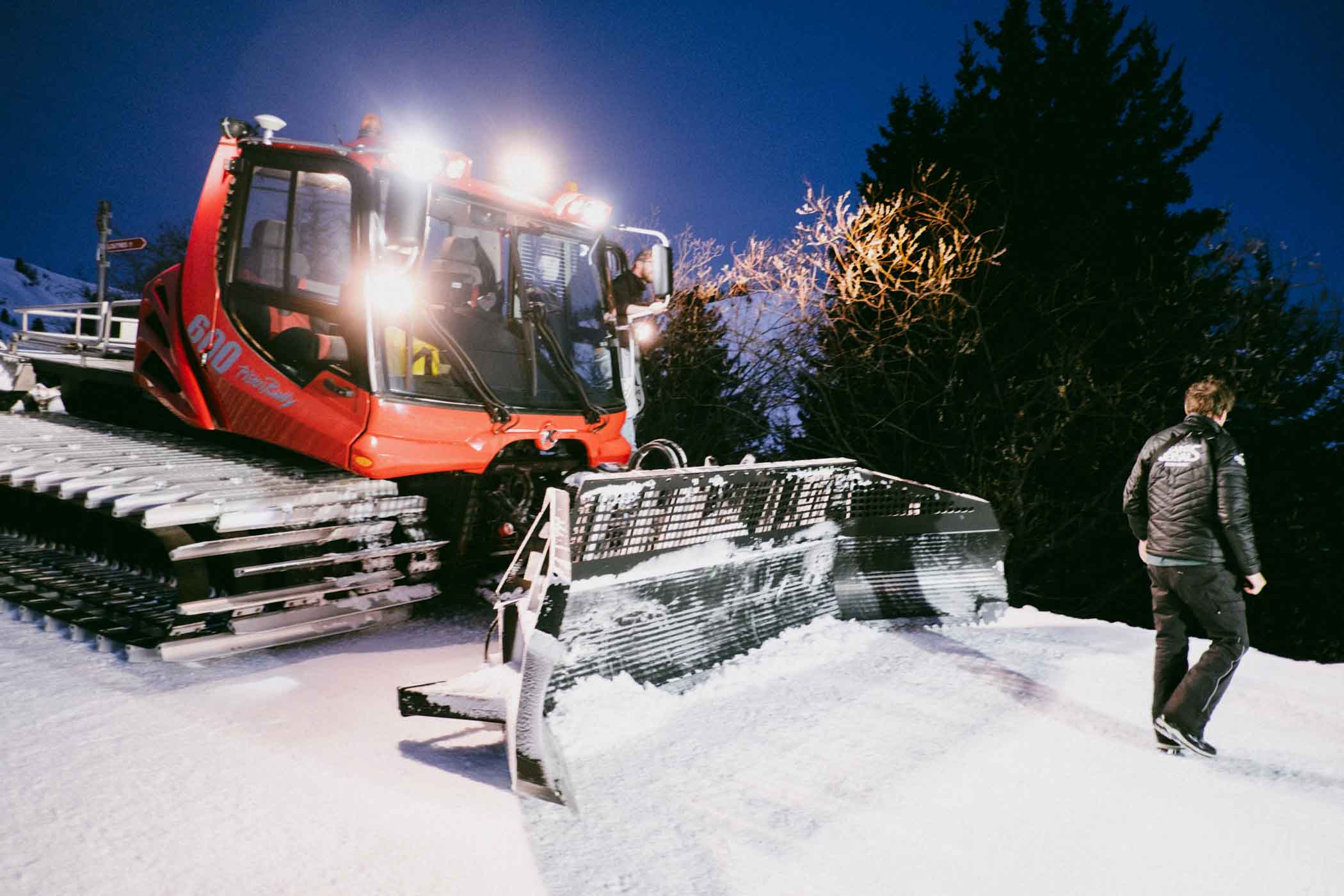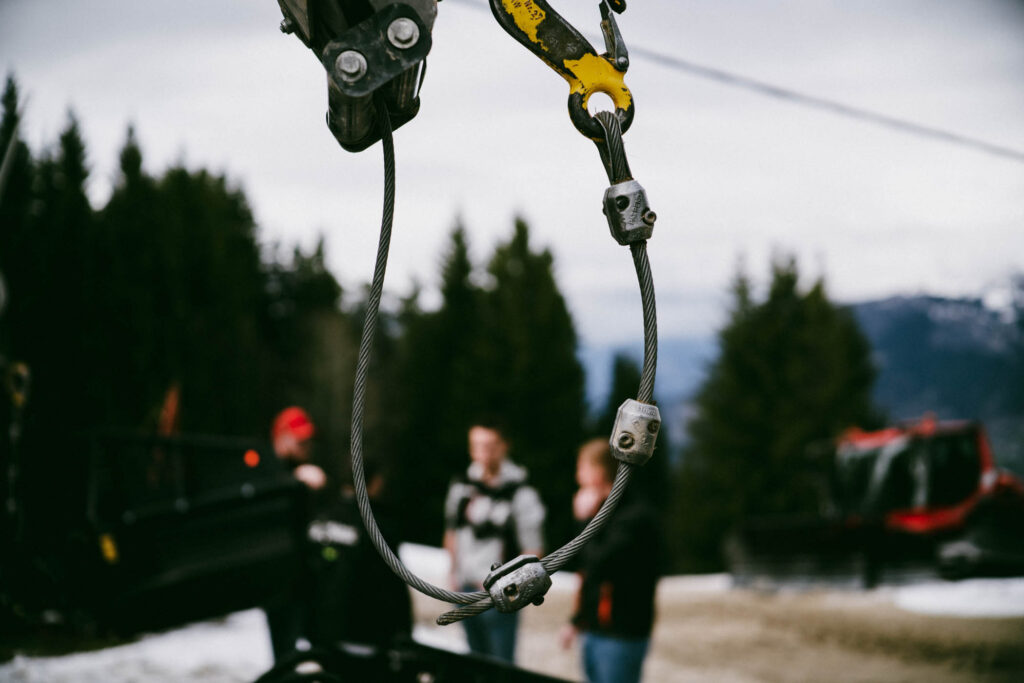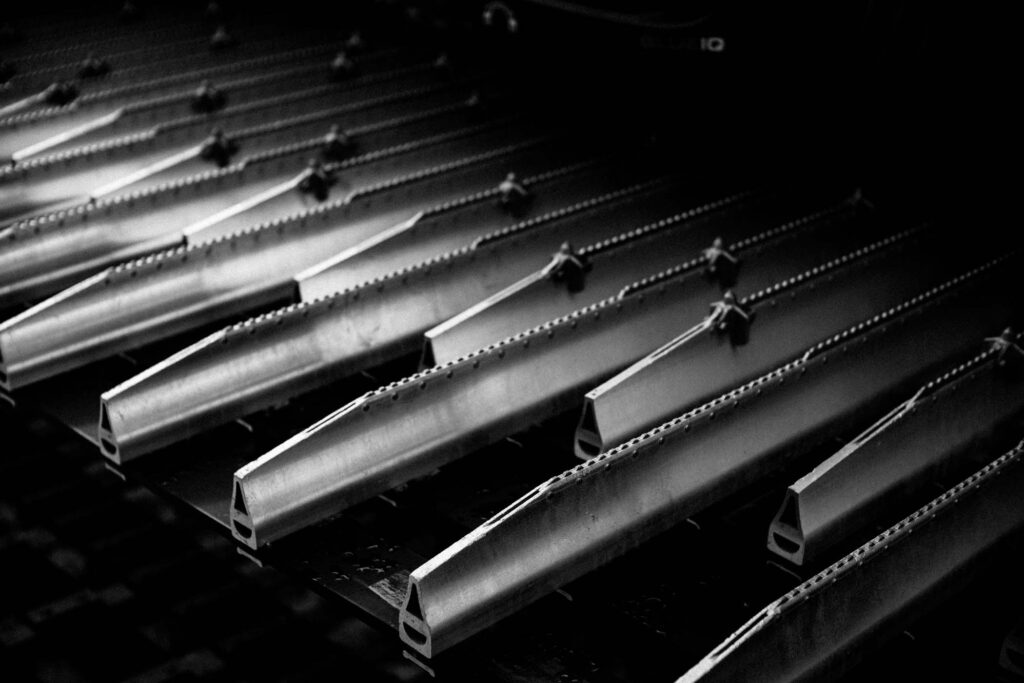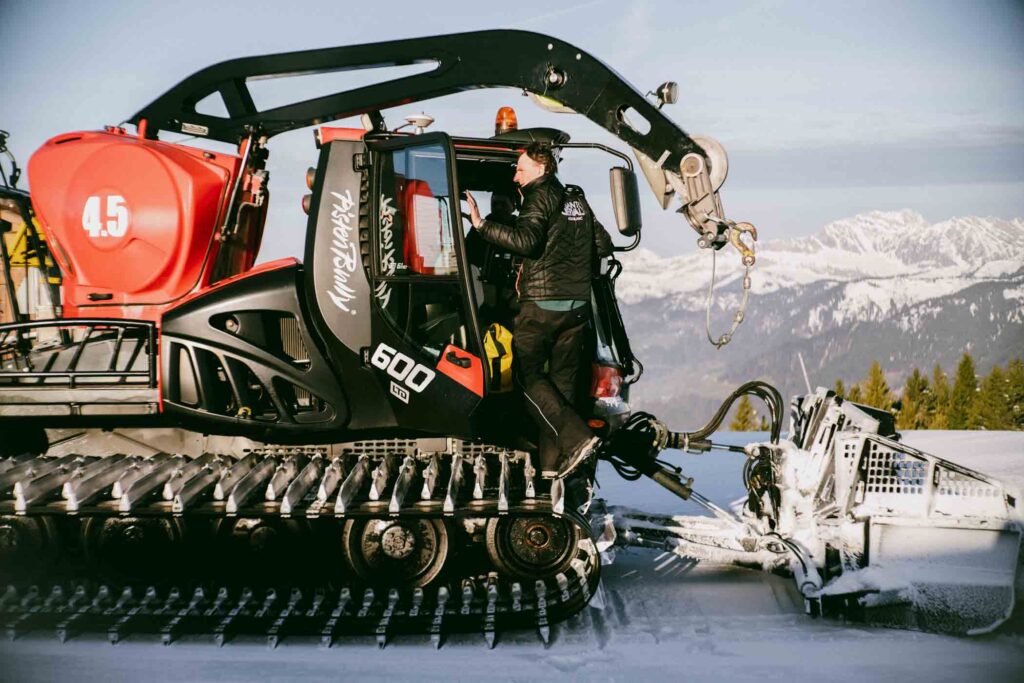A night with the piste bashers


We discover what it’s like to be up there, all alone in the darkness, during a night shift with the piste bashers
Words and photos Paul Fuller
I’ll be upfront and admit that I don’t ski. My partner does, all of her family do, and even our daughters, aged six and eight, do. And while they are all skiing, I hike and take photos. With that in mind, it’s probably not surprising that I am slightly ignorant of the infrastructure required to keep a ski resort running and in the condition expected for the thousands of people who hit the slopes every day.
Sitting on the balcony of our apartment in Le Bettex, just up the mountain from Saint-Gervais near Mont Blanc, with a brandy one evening, I noticed tiny lights on the mountain, very high up and moving around.
“What are those lights?” I asked. “They’re the bashers,” came the reply.
The more I learned about these mighty machines, the more intrigued I became. I thought it must be amazing, and just a bit eerie, being up there all alone at night in the darkness. I had to go and see for myself.
I contacted Saint-Gervais with a proposal to photograph the bashers at work. They kindly agreed and, three weeks later, I was at the depot, ready for a night on the mountain.
My briefing before the trip was mainly safety related. Firstly, be very careful getting in and out of the cab, as you have to step on the vehicle’s track – and don’t ever just jump out. Because some of pistes are very steep, the vehicles have to be attached at the top by a steel cable, partly to slow the descent, but also to aid getting them back up to the top again (they weigh 10 to 15 tons).
My second safety tip was: if you get out of the cab to take photos while the basher is attached to the cable, keep well clear of it, as when it snaps tight to take the strain it could cut you in half. Very definitely noted!


It was 6pm and still light when my driver, Jean-Marc, and I set off. The weather was ok, partially cloudy but not snowing, so visibility was good. I’m told that some previous passengers have suffered terrible motion sickness in extreme weather when blizzards reduce visibility to near zero and you can only know roughly how steep the piste is by how far back in your seat you are forced going uphill, or how close to the windscreen you are leaning coming down, pressing hard on the footplates to counter gravity. I would experience this on my second trip (I had three trips in all). I suspect not knowing how close you are to the edge of a long drop probably plays on some passengers’ minds, too.
Saint-Gervais is part of the Évasion Mont Blanc ski area with 277 miles of terrain and 109 lifts. Saint-Gervais ski area itself has 54 miles of pistes and it all has to be groomed before the slopes reopen at 9am the next morning.
It takes 18 men 15 hours to cover the whole Saint-Gervais area, with one team working from 6pm until 2am, and a second team from 2am until 9am. Some parts of the piste need more attention than others.
We were in the final week of the season, and the snow was getting thin in some places, so snow from thicker parts of the piste had to be moved to cover those thinner patches. Due to the width of the slope compared to the vehicle, several runs up and down were needed to cover the full area. We stopped at the top of a black run. My driver swung the cable gear around to the back and hopped out. The cable was attached to a special steel post, and a bright orange flashing hazard light and a warning sign was set up to warn any rogue skiers that grooming was in progress and, more importantly, that a very dangerous steel cable was strung across the slope.
It’s quite some feeling to be facing down a black run in such a huge, heavy vehicle. On one of the runs, the steel post is absent and the cable is wrapped around a very large, pre-prepared tree. I asked Jean-Marc if the tree ever breaks. “Maybe once or twice,” came the answer.
I had three trips with the bashers: in daylight, in a full-on blizzard and at night. The views are always incredible, but it’s different when you feel you have the whole mountain to yourself, and soI very quickly came to understand the attraction of the job. There’s something of a cult status being the driver of piste bashers, too. Saint-Gervais receives dozens of CVs every year, without ever advertising a single position. Some drivers, like Jean-Marc, have been doing this for decades and still love every minute.
It’s hard work and not entirely risk free. It’s lonely, except for the walkie-talkie chat, cold, and the hours are terrible… eight hours a night, every night, six nights in a row, with one day off before the cycle starts again, for a whole five months.
But there’s something utterly magical about being on the mountain at night, not to mention, weather permitting, the sunsets and sunrises that bookend their shifts.
Some nights drivers see nothing but the white of a blizzard in their headlights, while some nights they see lone wolves, deer and other wildlife wandering casually across the piste, the twinkling lights of the town below as a backdrop.
There’s also an amazing team spirit among the drivers, working together to ensure that every inch of the mountain is covered. After my final night-time trip we stop, as usual, for hot chocolate in the one of the deserted mountain top restaurants.
The drivers laugh and chat and it feels good to be all together briefly before heading back to base. It’s daylight again now and we pass and wave to people heading up to start their day’s work in the bars, restaurants and lift stations.
One last task before the crew sign off is to clean the impacted snow and ice off the vehicles and prepare them for the next shift that evening. I’m tired and looking forward to breakfast back at the apartment, but totally buzzing from the experience.
That evening I sat on my balcony, as before, with my brandy and looked up at the lights on the mountain – only this time I knew just what was going on in their night-time mountain world. I did wonder, though, if they were perhaps a little taken for granted by the thousands of skiers who descend upon the mountains each day, oblivious to the amount of work that goes in to prepping the slopes just for them; but I also wondered if the drivers even cared. After all, it was really just them and the mountain.
